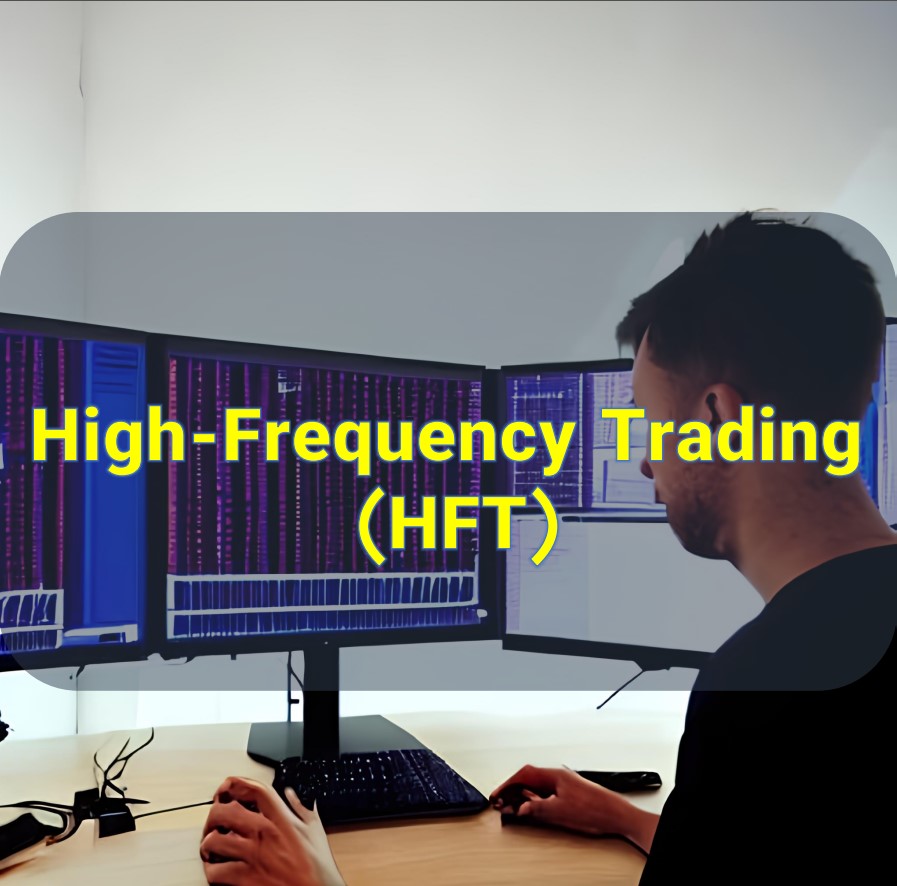The derivative market is a financial market where various financial instruments, known as derivatives, are traded. Derivatives are financial contracts whose value is derived from an underlying asset or a group of assets. These underlying assets can include commodities (such as oil or gold), stocks, bonds, currencies, interest rates, and more.
The primary purpose of the derivative market is to provide participants with a way to manage or speculate on price movements or risks associated with the underlying assets. Participants in the derivative market can include individuals, institutional investors, corporations, and even governments.
There are several types of derivatives commonly traded in the market, including futures contracts, options contracts, forward contracts, and swaps. Each type of derivative has its own characteristics and trading mechanisms.
Futures contracts
These are standardized contracts that obligate the buyer to purchase and the seller to sell an underlying asset at a predetermined price and future date. Futures contracts are commonly used for hedging purposes to manage price risks.
Options contracts
Options provide the buyer with the right, but not the obligation, to buy (call option) or sell (put option) an underlying asset at a specified price within a certain time period. Options are often used for speculation or hedging strategies.
Forward contracts
Similar to futures contracts, forward contracts are agreements between two parties to buy or sell an asset at a predetermined price on a future date. However, unlike futures, forward contracts are not traded on an exchange but are customized agreements between two parties.
Swaps
Swaps involve the exchange of cash flows or financial instruments between two parties. Common types of swaps include interest rate swaps, currency swaps, and commodity swaps. Swaps are often used to manage risks or alter cash flow characteristics.
The derivative market plays a significant role in global finance and provides participants with opportunities to hedge against risks, speculate on price movements, and manage their exposure to various financial variables. However, derivatives can also involve complex financial instruments and carry risks, such as price volatility and counterparty risk. It is important for participants to have a good understanding of derivatives and the associated risks before engaging in derivative market activities.
Liquidity
The derivative market is often highly liquid, meaning that there is a significant volume of trading activity and a large number of participants. This liquidity allows traders to enter and exit positions more easily, enhancing price discovery and reducing transaction costs.
Leverage
Derivatives can provide traders with leverage, allowing them to control a larger position with a smaller upfront investment. This leverage amplifies both potential profits and losses, making derivatives a high-risk investment tool. It is crucial for traders to carefully manage their leverage and understand the associated risks.
Hedging
One of the primary purposes of the derivative market is hedging. Hedging involves using derivatives to offset or mitigate the risks associated with price fluctuations in the underlying asset. For example, a farmer might use futures contracts to lock in a future selling price for their crops, protecting against potential price declines.
Speculation
The derivative market also attracts speculators who aim to profit from anticipated price movements in the underlying asset. Speculators take positions based on their expectations of future market conditions, hoping to earn profits from price fluctuations. However, speculative trading carries significant risks and requires careful analysis and risk management.
Price Discovery
The derivative market plays a crucial role in price discovery for the underlying assets. As derivatives are traded based on expectations of future prices, the information and sentiment reflected in derivative prices can influence the spot prices of the underlying assets.
Regulation
Given the complex nature and potential risks associated with derivatives, regulatory authorities closely monitor and regulate the derivative market to maintain market integrity, protect investors, and minimize systemic risks. Regulations may include requirements for disclosure, margining, reporting, and oversight of derivative market participants.
Over-the-Counter (OTC) and Exchange-Traded
Derivatives can be traded on organized exchanges or over-the-counter. Exchange-traded derivatives, such as futures and options, have standardized contracts and trade on regulated exchanges. OTC derivatives, such as swaps, are customized contracts negotiated directly between two parties outside of an exchange.
Global Market
The derivative market is global, with trading taking place in various financial centers around the world. Major financial institutions, investment banks, and specialized derivative trading firms are active participants in this market.
Risk Management
Derivatives provide a range of risk management tools for market participants. They enable investors to hedge against adverse price movements, protect their portfolios, and manage exposure to various market risks, such as interest rate risk, currency risk, and commodity price risk.
Arbitrage Opportunities
The derivative market can create arbitrage opportunities. Arbitrage involves taking advantage of price discrepancies between related assets in different markets. Traders can profit by buying an undervalued derivative in one market and simultaneously selling the overvalued derivative in another market, thereby exploiting price differentials until they converge.
Market Efficiency
The derivative market contributes to overall market efficiency by facilitating the flow of information, enhancing liquidity, and enabling participants to express their views on the future direction of asset prices. Efficient derivative markets can lead to more accurate pricing of underlying assets and improved capital allocation.
Diversification
Derivatives offer opportunities for diversification within investment portfolios. By including derivatives with different underlying assets or strategies, investors can potentially reduce risk and increase returns by spreading their investments across multiple markets or instruments.
Regulatory Challenges
The derivative market faces ongoing regulatory challenges due to its complexity and potential for systemic risk. Regulators aim to strike a balance between promoting market stability and preventing excessive risk-taking while also allowing for innovation and market efficiency. Regulatory reforms have been implemented in many jurisdictions to enhance transparency, reduce counterparty risk, and increase oversight of the derivative market.
Volatility and Price Discovery
Derivative markets can experience higher levels of volatility compared to the underlying assets. This volatility can be driven by market sentiment, macroeconomic factors, geopolitical events, or changes in supply and demand dynamics. Derivatives can also provide valuable insights into market expectations and assist in price discovery for the underlying assets.
Sophisticated Trading Strategies
The derivative market allows for the implementation of various complex trading strategies. These strategies can involve combinations of different derivative instruments, hedging techniques, and speculative positions to take advantage of specific market conditions or opportunities. However, it’s important to note that sophisticated trading strategies require in-depth knowledge, experience, and careful risk management.
Market Participants
The derivative market attracts a wide range of participants, including institutional investors, hedge funds, commercial banks, investment banks, individual traders, and corporations. Each participant may have different motivations, objectives, and risk tolerance levels, leading to diverse trading strategies and behaviors.
Margin Requirements
Derivative trading often involves the use of margin, which is a portion of the total contract value that traders must provide upfront as collateral. Margin requirements vary depending on the derivative product, market conditions, and regulations. Margin helps ensure that traders can meet their financial obligations and serves as a risk management tool for both market participants and clearinghouses.
Clearing and Settlement
Derivative trades typically go through a clearing process to mitigate counterparty risk. Clearinghouses act as intermediaries between buyers and sellers, guaranteeing the performance of trades and becoming the counterparty to each trade. This arrangement helps ensure the smooth settlement of transactions and reduces the risk of default.
Market Volatility and Risk Management
The derivative market is influenced by market volatility, as price fluctuations impact the value of derivative contracts. Market participants must employ effective risk management strategies to mitigate potential losses caused by volatile price movements. This may involve using stop-loss orders, diversifying portfolios, or employing hedging techniques.
Financial Innovation
The derivative market has been a catalyst for financial innovation. Over time, new derivative products and strategies have emerged to meet evolving market needs. Financial engineers and product developers continuously work to create derivatives that offer new risk exposures, better customization, or improved efficiency in managing financial risks.
Regulatory Oversight
Governments and regulatory bodies closely monitor the derivative market to ensure fair and transparent trading practices, protect investors, and maintain market stability. Regulations may include reporting requirements, capital adequacy standards for market participants, risk management guidelines, and restrictions on certain types of derivatives.
Interconnectedness
The derivative market is interconnected with other financial markets. Changes in derivative prices can impact the prices of underlying assets, and vice versa. Therefore, developments in the derivative market can have broader implications for the overall financial system, highlighting the need for risk monitoring and systemic risk management.
Globalization
The derivative market is a global phenomenon, with trading taking place across international borders. Advances in technology and communication have facilitated the growth of global derivatives trading, enabling participants to access markets and execute trades in real-time from anywhere in the world.
Impact on Real Economy
The derivative market can have a significant impact on the real economy. For example, commodity derivatives allow producers and consumers to manage price risks, which can contribute to stable prices for essential goods. Additionally, interest rate derivatives influence borrowing costs, impacting investment decisions by businesses and individuals.
Overall, the derivative market plays a crucial role in global finance by providing risk management tools, price discovery mechanisms, and opportunities for investment and speculation. However, participants should approach derivatives with caution, understanding the associated risks and employing appropriate risk management strategies.
It’s important to note that engaging in derivative market activities involves inherent risks, and individuals or entities considering participating in these markets should seek appropriate professional advice and conduct thorough research before making investment decisions.
It’s important to note that the derivative market is complex and can involve substantial risks. Individuals and institutions interested in participating should seek professional advice, conduct thorough research, and carefully assess their risk tolerance and investment objectives before entering into derivative transactions.
The advantage of derivatives market compared to a market like stocks
The derivative market offers several advantages compared to traditional stock markets. Here are some key advantages of the derivative market:
Increased Leverage
Derivatives allow traders to control a larger position with a smaller upfront investment. This leverage can amplify potential returns compared to investing directly in stocks. However, it’s important to note that leverage also increases the potential for losses, so it must be used carefully and with proper risk management.
Diversification
Derivatives provide opportunities for diversification beyond traditional stocks. They allow investors to gain exposure to various asset classes, including commodities, currencies, interest rates, and more. This diversification can help spread risk and enhance portfolio performance.
Risk Management
Derivatives are widely used for risk management purposes. They enable investors to hedge against adverse price movements in underlying assets. For example, a company may use futures contracts to lock in a purchase price for commodities, protecting against potential price increases. This risk management aspect can be valuable for investors seeking to mitigate exposure to market volatility.
Flexibility
Derivatives offer flexibility in terms of investment strategies and trading opportunities. They provide a wide range of instruments, such as options, futures, swaps, and more, each with unique characteristics. This flexibility allows investors to tailor their positions and strategies to specific market conditions, investment goals, and risk profiles.
Market Access
Derivatives provide access to markets that may otherwise be difficult to enter or trade directly, such as international commodity markets or foreign currency markets. They enable investors to gain exposure to global markets and diversify their investments beyond domestic stocks.
Price Discovery
The derivative market plays a role in price discovery for the underlying assets. As derivative prices are based on expectations of future prices, they can reflect market sentiment and supply-demand dynamics. This information can be useful for investors in determining the fair value of the underlying assets.
Lower Transaction Costs
Derivatives often have lower transaction costs compared to direct investments in underlying assets. This is because derivatives are typically traded on organized exchanges with competitive pricing structures and efficient execution mechanisms.
Speculative Opportunities
The derivative market provides opportunities for speculation and potentially higher returns for traders who are willing to take on increased risk. Traders can take positions based on their expectations of future price movements, enabling them to profit from both rising and falling markets.
It’s important to note that while the derivative market offers advantages, it also carries risks. The complexity of derivatives and the potential for leverage can result in substantial losses if not managed properly. Therefore, it is crucial for market participants to have a good understanding of derivatives, employ risk management strategies, and seek professional advice when necessary.







